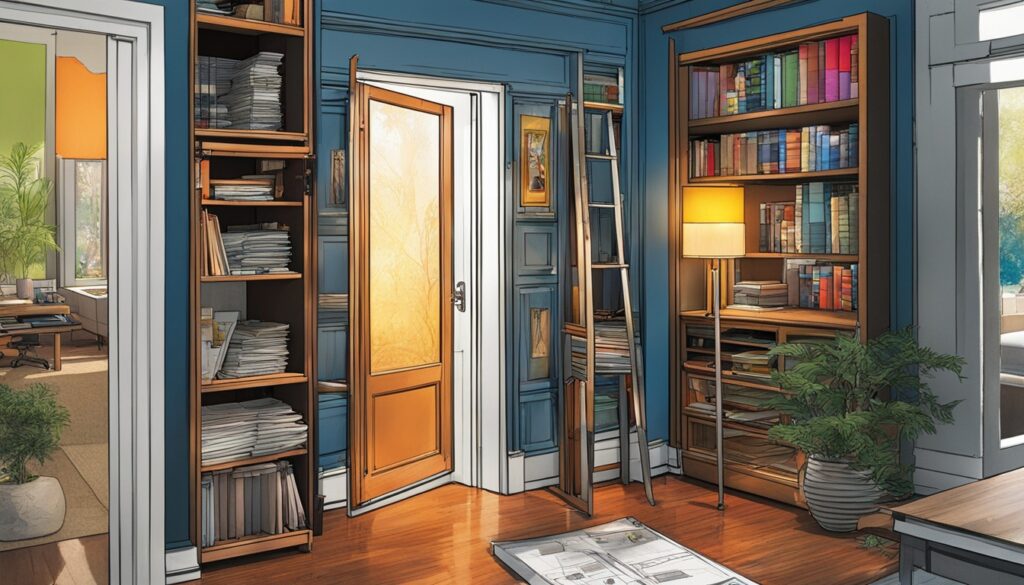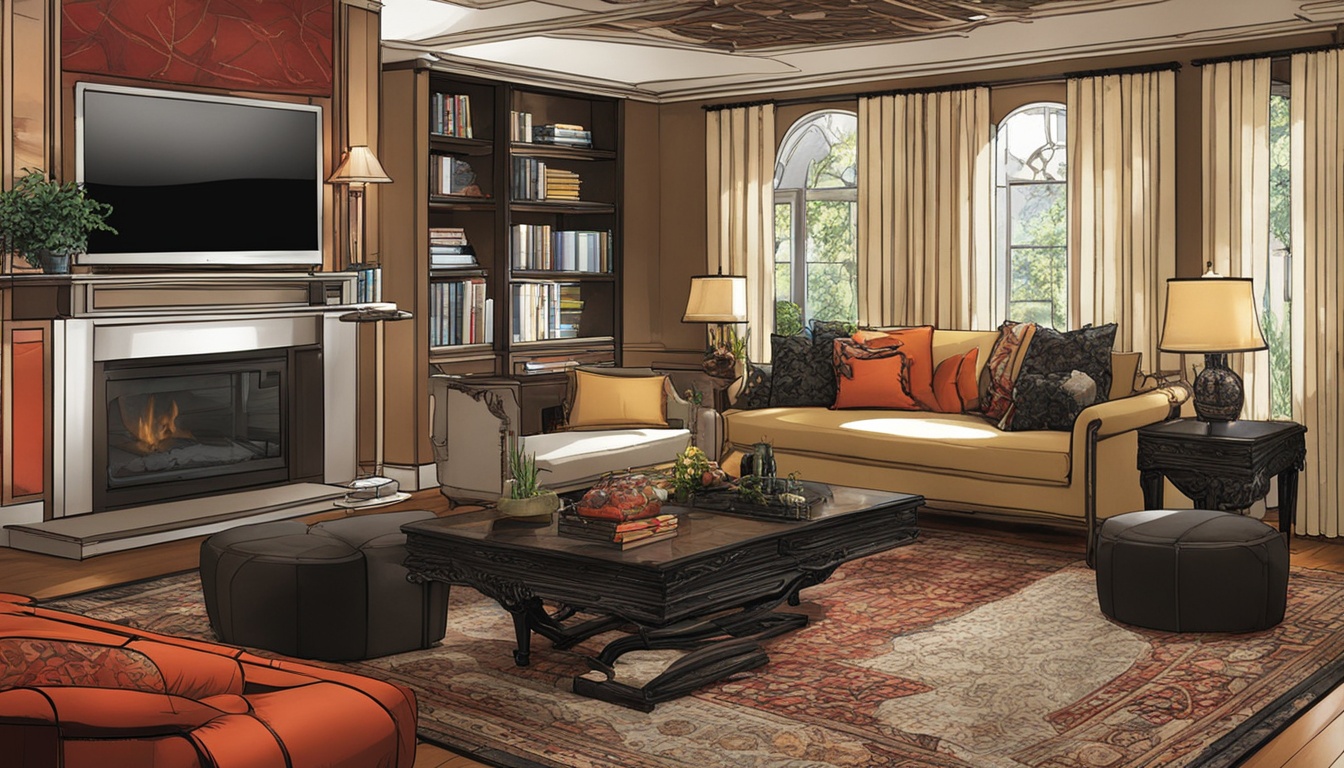Embarking on a journey to a master’s degree in interior design is a transformative step towards elevating your professional standing in a booming industry. Today, the market demand for skilled interior designers is surging, pushing the boundaries of creativity and innovation. With the projected growth of the interior design industry expected to reach $212 billion by 2027, your decision to pursue advanced design education is timely and strategic. Various accredited programs across the United States cater to both emerging and professional designers looking to master their craft. By understanding the admission requirements and preparing thoroughly, you can set yourself up for a successful application to interior design master’s programs that align with your career aspirations.
Key Takeaways
- The interior design industry is projected to grow to $212 billion by 2027.
- Employment of interior designers is expected to increase by 4% from 2019 to 2029.
- The average tuition fees for top US universities range from $32,858 to $57,256.
- Starting salaries for interior design graduates range from $46,000 to $60,000.
- Scholarships and financial aid options may cover up to $100,000 for talented students.
The Rising Demand for Interior Designers
The interior design profession is experiencing significant growth, driven by increasing consumer interest in aesthetic and functional spaces. As urban areas continue to expand, the demand for interior designers will only intensify. You can seize the moment to explore this flourishing field and understand its potential.
Industry Growth Projections
Industry growth projections indicate a steady rise in the need for skilled interior designers. According to historical data, the employment of interior designers is anticipated to increase by 4% from 2019 to 2029. This growth reflects the broader trend across various sectors, where specialized talent is crucial. Recognizing the consistent demand for interior designers enables you to align your career path with these promising projections.
Opportunities in Urban Areas
Urban areas are teeming with opportunities for interior designers. As cities grow and modern buildings emerge, the necessity for innovative design solutions skyrockets. Interior designers can focus on various projects, ranging from residential homes to commercial establishments. The urban landscape encourages creativity and offers a competitive market that values unique design approaches. Taking advantage of these opportunities can lead to exciting and fulfilling career advancements.

Exploring Interior Design Graduate Programs
When delving into the world of interior design, it is essential to explore the various interior design graduate programs available. Each program is designed to cater to different career aspirations and skill sets. Understanding these options allows you to make informed decisions regarding your educational path.
Types of Programs Available
Interior design graduate programs come in various formats, each serving unique educational and professional goals. Options include:
- Master of Fine Arts (MFA) – Focuses on developing practical skills in interior design.
- Master of Science (M.S.) – Emphasizes technical and mathematical aspects of design.
- Master of Design (M.Des) – Explores conceptual and theoretical frameworks in design.
- Master of Arts (M.A.) – Concentrates on humanities and liberal arts within the design field.
Some schools, such as Woodbury School of Architecture, offer STEM-designated degrees, allowing international students extended post-completion Optional Practical Training (OPT). Different programs may require varying credits, typically ranging between 30 and 87 credits for graduation.
Benefits of Advanced Education in Design
Investing in advanced education in design presents numerous advantages:
- Enhanced job prospects with an increasing demand for skilled interior designers.
- Opportunity to build a strong portfolio showcasing your design capabilities.
- Access to invaluable networking opportunities within the interior design industry.
Programs like the one at Woodbury empower students with a flexible curriculum tailored to individual career paths, incorporating elements from gaming, psychology, and business. A structured first- and second-year curriculum culminates in a thesis project that allows students to innovate and collaborate with faculty and industry experts.

Ultimately, pursuing a graduate program in interior design not only hones your skills but positions you competitively in a flourishing job market, offering a rewarding career path with a median annual salary of $62,510 or more.
How to Apply for Interior Design Masters
Embarking on the journey towards an interior design master’s degree requires a keen understanding of the application process for interior design master’s degree. This involves several crucial steps, including gathering required documentation, crafting an engaging personal statement, and being aware of application deadlines. Taking the time to prepare can significantly enhance your chances of gaining admission to your ideal program.
Gathering Required Documentation
The first step in how to apply for interior design masters is to gather all necessary materials. Commonly requested items include:
- Unofficial transcripts from all colleges attended
- Three letters of recommendation
- A personal statement outlining your goals and motivations
Ensuring that these documents are complete and up to date is essential for a successful application process.
Crafting a Compelling Personal Statement
Your personal statement is a critical aspect of your application. It allows you to showcase your passion for interior design and articulate your vision for the future. Make sure to address your interest in the specific focus areas offered by the program. Creativity in presenting your thoughts and experiences can make a significant impact on the admissions committee.
Understanding Application Deadlines
Each program has its own application timeline, so staying organized is vital. Certain deadlines may be set as early as February 1 for the fall term. Keep track of the specific dates for the programs you are interested in. Being proactive can prevent last-minute scrambles and ensure you have ample time to put together a strong application.

| Program | Application Deadline | Required GPA | TOEFL Score (if applicable) |
|---|---|---|---|
| MFA1 – New York School of Interior Design | Rolling admissions | 3.0 | 79 iBT |
| MSD – ASU | February 1 | 3.0 | 80 iBT |
Understanding these key components will help you navigate how to apply for interior design masters confidently. Your journey begins with thorough preparation and a keen eye for detail in your application process for interior design master’s degree.
Requirements for Interior Design Master’s Program
When considering the requirements for interior design master’s program, it is essential to understand what is necessary for a successful application. This typically involves academic qualifications and the submission of a captivating portfolio. Each component plays a vital role in showcasing your potential as a future interior designer.
Academic Qualifications
To gain admission into most master’s programs, a bachelor’s degree in interior design or a related field is required. Strong academic qualifications, often characterized by a minimum GPA of 3.0, will bolster your chances of acceptance. Many programs also request transcripts from previous academic endeavors. Prospective students with professional experience in the field may find this advantageous, as it adds depth to your application. Furthermore, GRE scores are generally expected, providing a comprehensive view of your academic preparedness.
Portfolio Submission Guidelines
Your portfolio is a crucial element of your application, as it highlights your creativity and technical skills. Each institution’s portfolio submission guidelines may vary, so it’s important to pay attention to the specifics outlined by the schools you are applying to. A well-curated portfolio should include:
- A selection of your best design projects
- Evidence of your design process
- Visual documentation of your work, including sketches and final presentations
- Reflective statements on each project highlighting your creative decisions
Following the guidelines effectively will enhance your presentation and help you stand out among applicants. Make sure to tailor your portfolio to showcase your unique design voice.

| Requirements | Details |
|---|---|
| Bachelor’s Degree | Degree in interior design or a related field. |
| GPA | Minimum GPA of 3.0 recommended. |
| GRE Scores | Required for admission evaluation. |
| Transcripts | Official transcripts from previous institutions. |
| Portfolio | A comprehensive selection showcasing design projects and skills. |
| Letters of Recommendation | Generally, 2-3 letters required. |
Tips for Applying to Interior Design Graduate School
Embarking on a journey to secure a place in an interior design graduate program invites excitement and challenges. Understanding the essential tips for applying to interior design graduate school can streamline the process. Focus on two main aspects: researching schools and programs, and connecting with industry professionals.
Researching Schools and Programs
Investing time in researching schools and programs is crucial for finding a fit that aligns with your career aspirations. Look for institutions with strong accreditation and a curriculum that covers both the fundamentals and advanced concepts of interior design. Consider the following factors when evaluating programs:
- Accreditation status
- Faculty qualifications and industry experience
- Curriculum content and specialization areas
- Facilities and design resources
- Scholarship opportunities and financial aid
Networking with Industry Professionals
Networking in design plays a pivotal role in your application journey. Establishing connections with experienced professionals can provide invaluable insights and recommendations. Engage with the design community through:
- Joining local and national design associations
- Attending workshops, seminars, and industry conferences
- Connecting with alumni from your target programs
- Utilizing social media platforms for professional networking
These interactions can enhance your understanding of the field and open doors to potential opportunities. With dedicated researching schools and programs and robust networking efforts, you can confidently navigate the application process.

| Criterion | Considerations |
|---|---|
| Accreditation | Verify program accreditation to ensure quality education. |
| Faculty | Look for faculty with industry experience and relevant expertise. |
| Specializations | Select programs that offer courses in your specific areas of interest. |
| Networking Events | Participate in events for direct access to industry professionals. |
| Financial Aid | Explore scholarship options available to incoming students. |
Finding the Best Schools for Interior Design Master’s Program
Identifying the best schools for your interior design master’s program requires a closer look at accreditation and rankings, as well as the available facilities and resources. These factors directly impact the quality of education, practical learning experiences, and your overall success as an aspiring designer.
Top Accreditation and Rankings
Accreditation and rankings play a crucial role in selecting a top-tier institution. Programs accredited by the Council for Interior Design Accreditation provide a stamp of approval, ensuring the curriculum meets industry standards. One standout is the Savannah College of Art and Design (SCAD), recognized as the number one university in the US for six consecutive years by the Red Dot Rankings. Additionally, SCAD has achieved honors such as:
- Best art and design university in the US by Art & Object for two years.
- One of the best interior design schools, recognized seven times by DesignIntelligence since 2008.
Facilities and Resources
State-of-the-art facilities and resources enhance your learning environment. SCAD stands out with dedicated design studios and access to real-world experiences. It offers SCADpro, a collaborative design studio where students engage in practical projects. Opportunities like SCADstyle, an annual event that gathers leading professionals, foster innovation and critical thinking. Facilities can significantly influence your academic success by providing essential tools and creative spaces needed for hands-on learning.

| School | Annual Cost | Job Placement Rate | Accreditations |
|---|---|---|---|
| Savannah College of Art and Design | $38,340 | 93% | CIDA Accredited |
| Visual College of Art and Design | $41,895 | — | — |
| Pratt Institute | $55,575 | 93% | CIDA Accredited |
| New York School of Interior Design | $1,150 per credit | 92% | CIDA Accredited |
| University of Technology, Sydney | $24,492 – $32,292 | — | — |
Conclusion
Applying for a master’s degree in interior design is a crucial step to elevate your career in a rapidly growing industry. With a projected employment growth rate of 19% from 2008 to 2018, the opportunities are abundant. Understanding the various dimensions of the market, including the rising demands in healthcare and hospitality sectors, will enable you to secure your future in design. In addition, obtaining a master’s degree will provide you with the necessary skills and knowledge to create innovative and functional designs that meet the needs of clients. It will also give you the opportunity to build a strong network within the industry, which can lead to potential job opportunities and collaborations. As you prepare your application, it is important to showcase your talents and experience through your interior design portfolio. Here are some interior design portfolio tips to help you stand out from the competition.
As you prepare to apply for interior design masters programs, gathering the necessary documentation and crafting a standout personal statement can significantly enhance your application. Programs often feature diverse curricula that not only address design principles but also prepare you for practical challenges in the field. These experiences are invaluable, allowing you to improve your skills and broaden your understanding of architectural aesthetics.
Utilize this guide as a strategic roadmap to navigate your path in interior design education. By taking these important steps and aligning your passion for design with your career goals, you’re well on your way to a successful future in this dynamic field.








